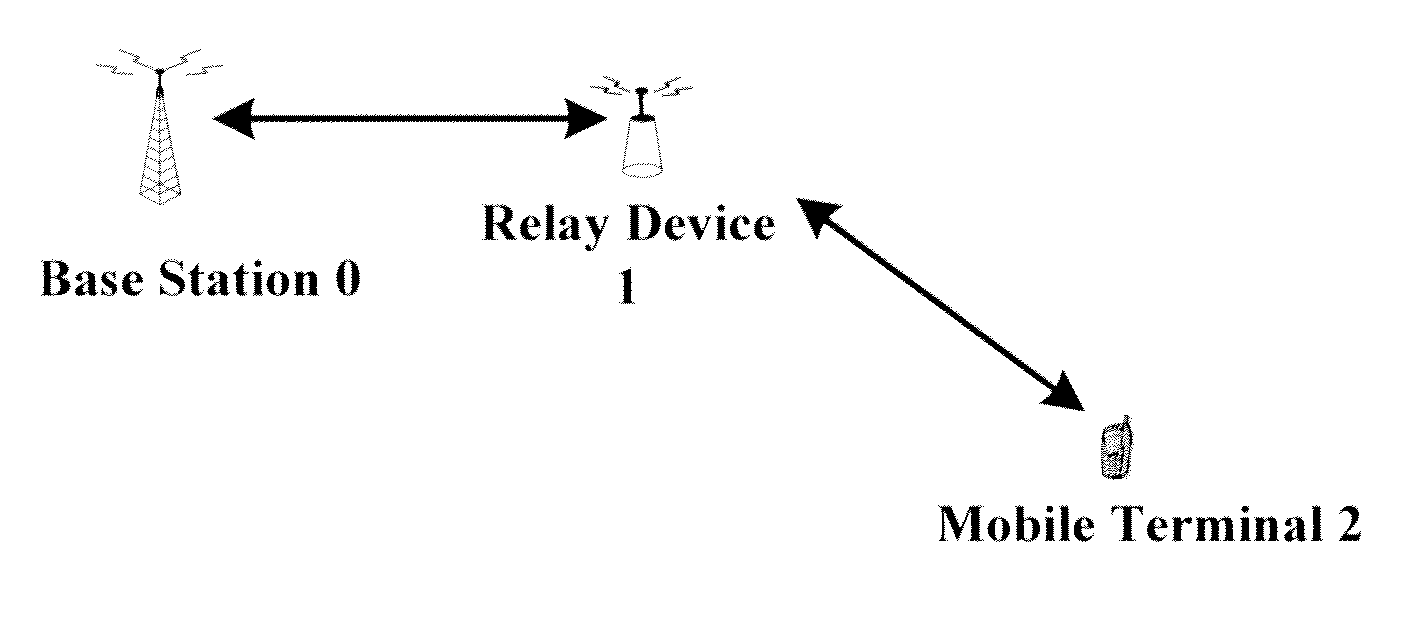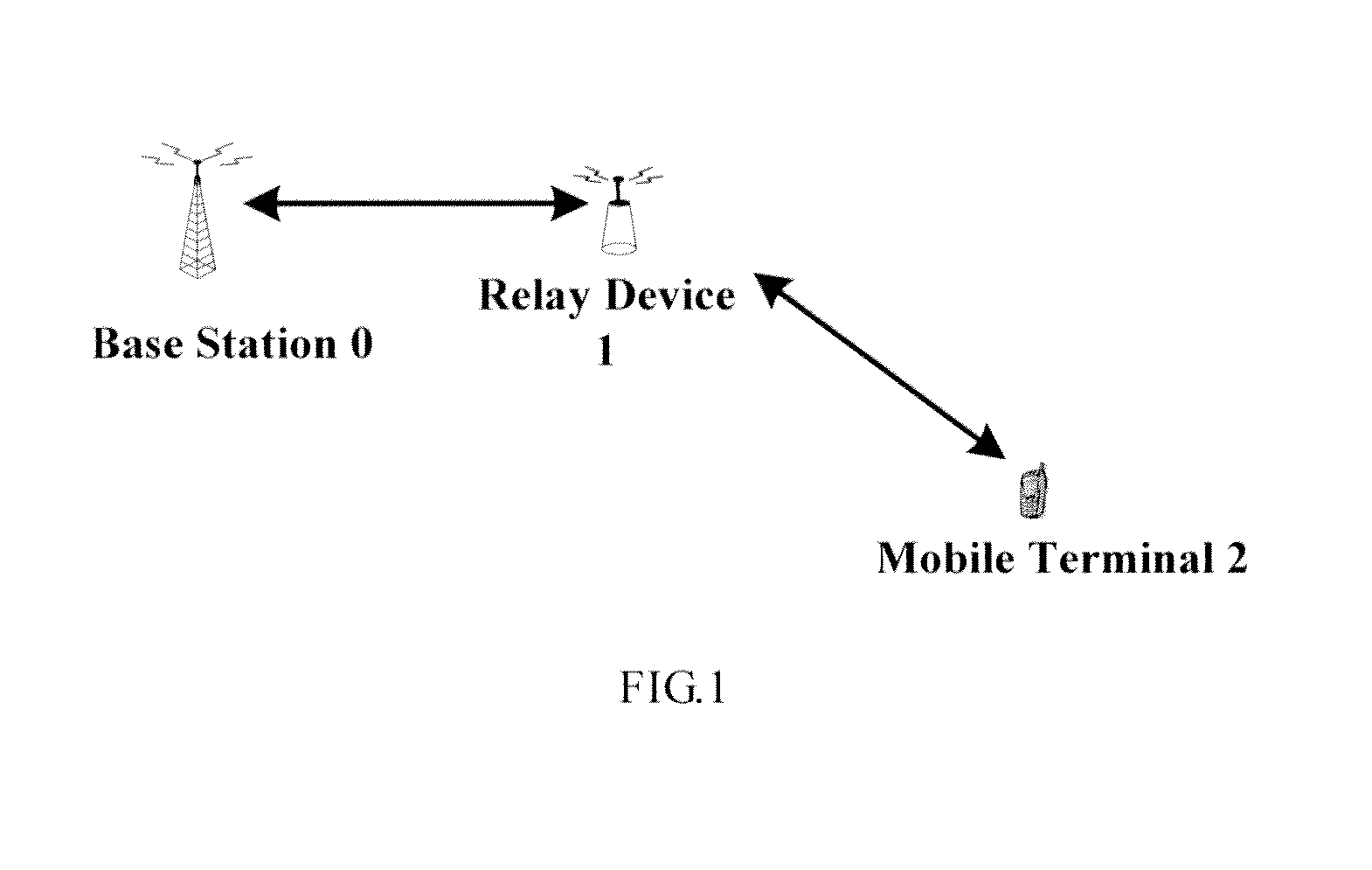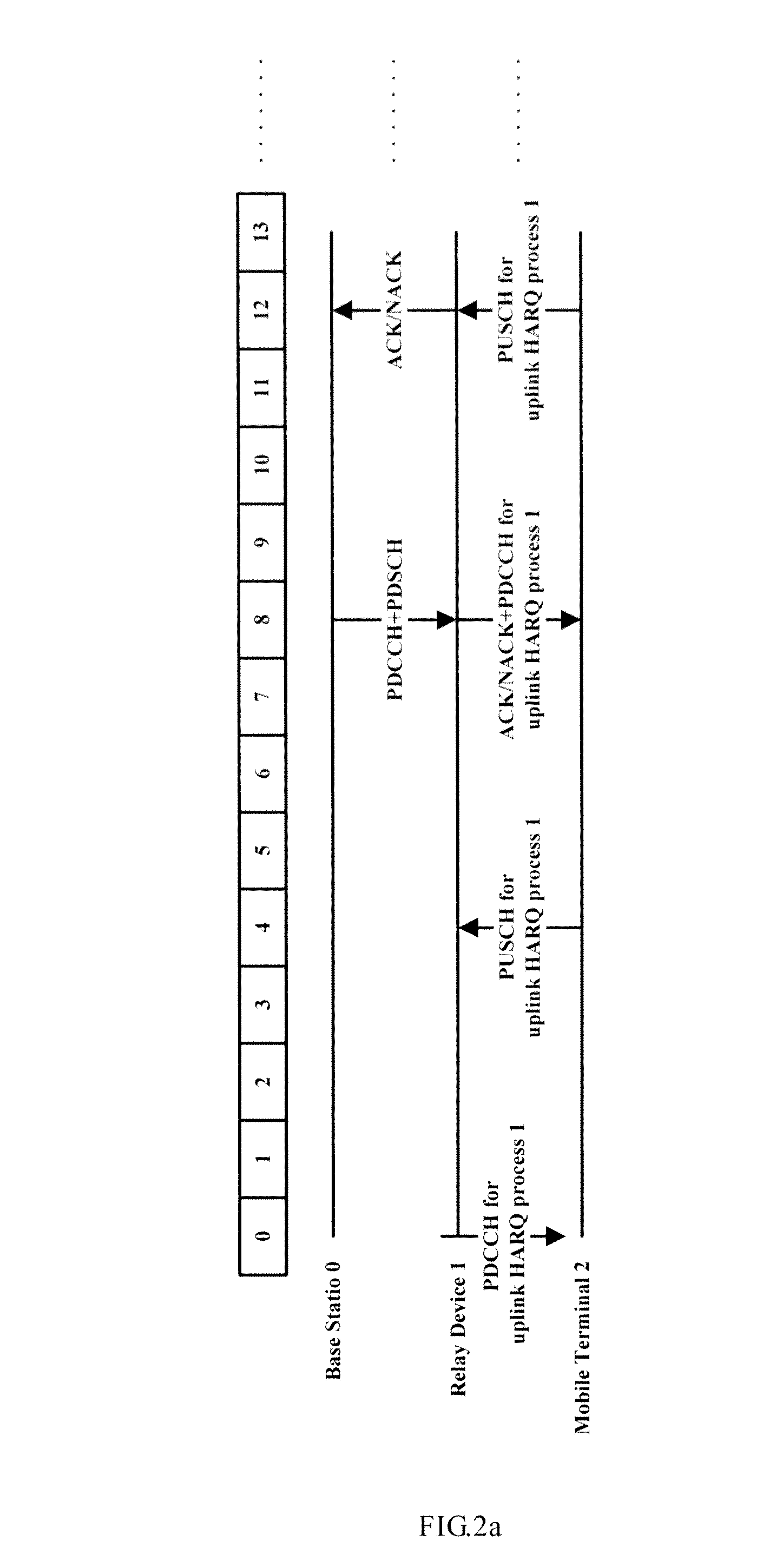Method and apparatus for preventing signal interference in wireless relay network based on synchronous HARQ
- Summary
- Abstract
- Description
- Claims
- Application Information
AI Technical Summary
Benefits of technology
Problems solved by technology
Method used
Image
Examples
Embodiment Construction
[0031]Detailed description of the non-limiting embodiments is given below in connection with the accompanying drawings.
[0032]It is easy to understand that, in FIGS. 2a-2h and the subsequent signal flow diagrams, only one uplink HARQ process between relay device 1 and mobile terminal 2 is illustrated, but those skilled in the art understands that there can simultaneously be other HARQ processes between mobile terminal 2 and relay device 1. For example, a downlink HARQ process can occupy sub-frames 1, 5, 9 . . . shown in FIG. 2. Since in a frequency division system such as LTEA, there is a sufficient guard interval between uplink frequency band and downlink frequency hand, a sub-frame can be used for an uplink HARQ process and a downlink HARQ process simultaneously without causing any self-interference at the relay device. In view of this, the following discussion focuses on uplink synchronous HARQ process based on synchronous HARQ technique.
[0033]FIG. 3 shows a flowchart of a system ...
PUM
 Login to View More
Login to View More Abstract
Description
Claims
Application Information
 Login to View More
Login to View More - R&D
- Intellectual Property
- Life Sciences
- Materials
- Tech Scout
- Unparalleled Data Quality
- Higher Quality Content
- 60% Fewer Hallucinations
Browse by: Latest US Patents, China's latest patents, Technical Efficacy Thesaurus, Application Domain, Technology Topic, Popular Technical Reports.
© 2025 PatSnap. All rights reserved.Legal|Privacy policy|Modern Slavery Act Transparency Statement|Sitemap|About US| Contact US: help@patsnap.com



